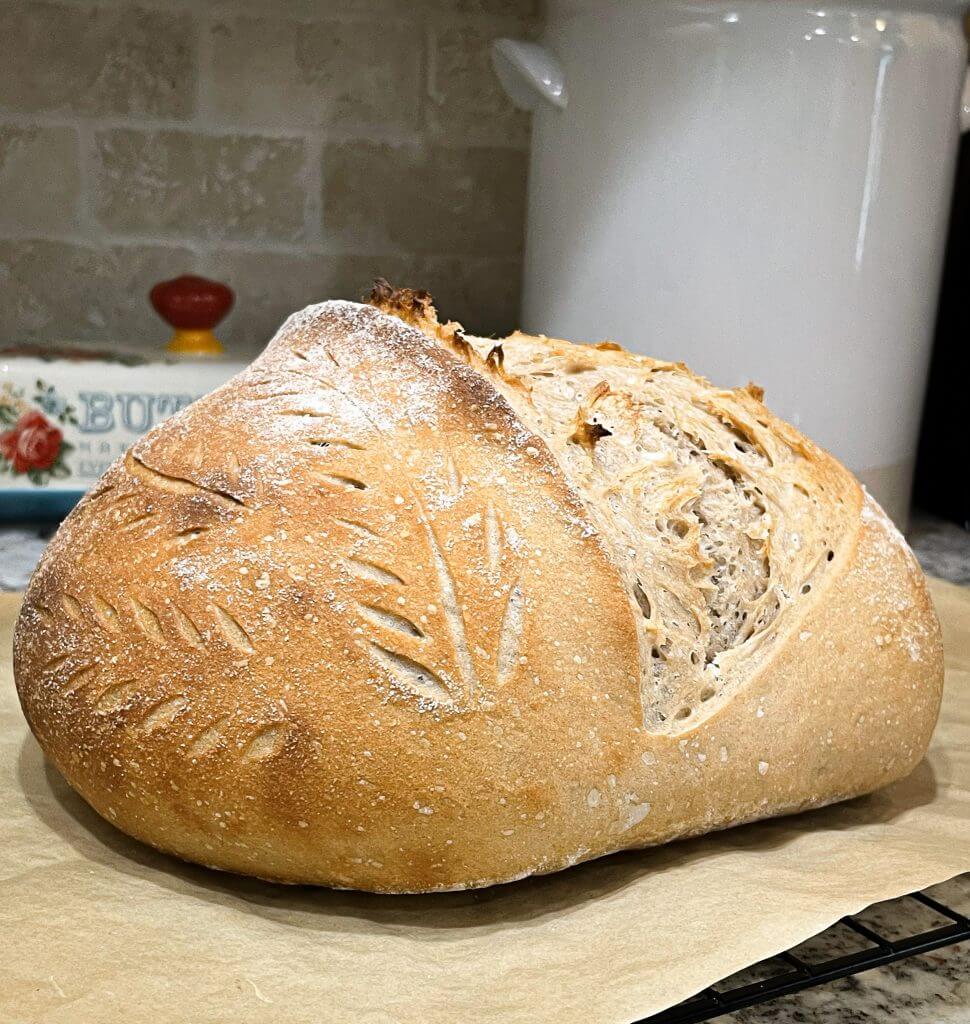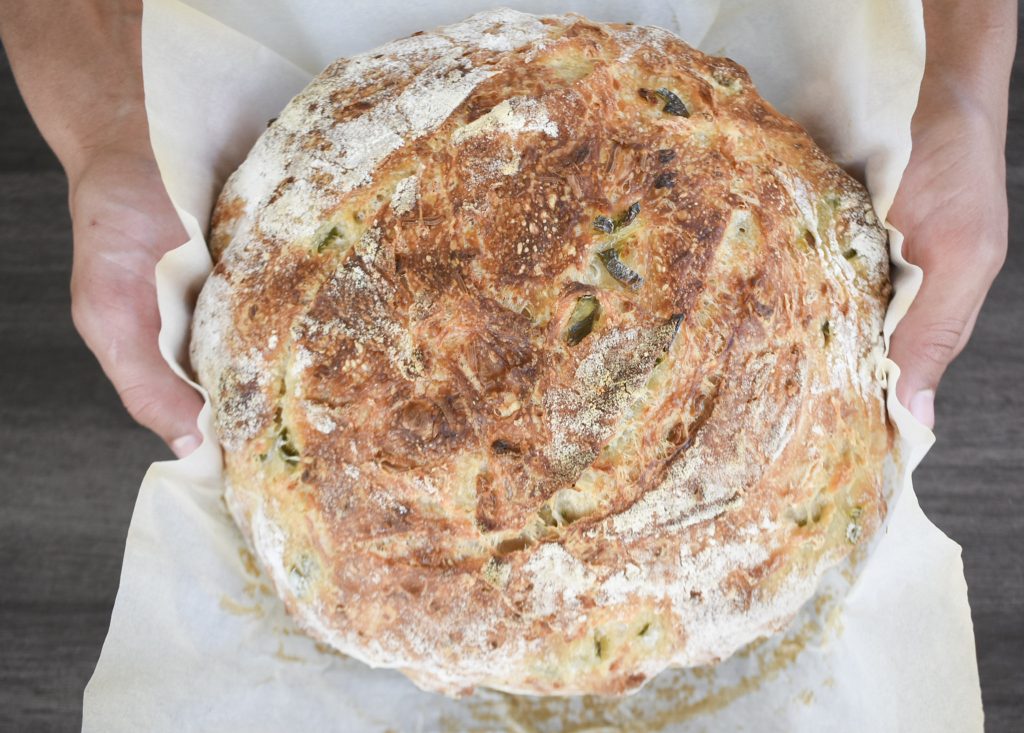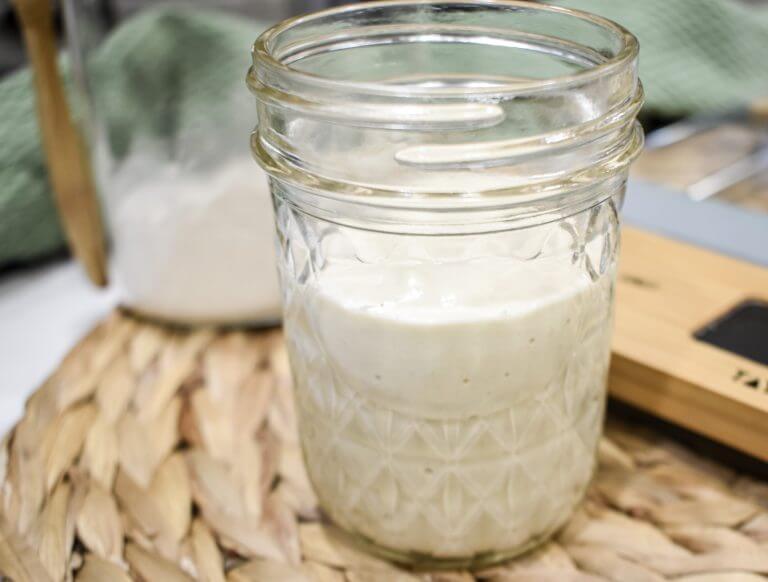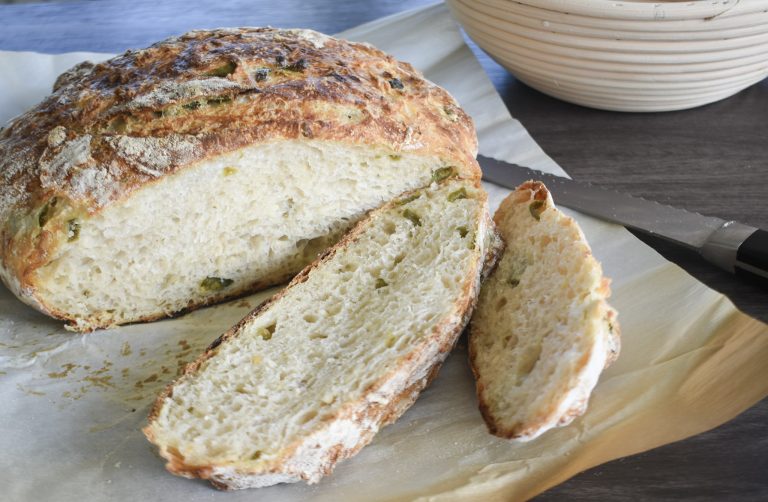Mastering Open Baking Sourdough 101
Did you know that some of the world’s most famous bakers started their sourdough journey without a Dutch oven? While 78% of home bakers believe they need this specialized equipment, the truth is you can achieve that famous crackling crust and tender crumb using equipment you already have! I’ve spent some time perfecting these alternative methods, and I’m excited to share how you can create bakery-worthy sourdough bread using simple tools. Whether you’re just starting your sourdough adventure or looking to try new techniques, this guide will transform your bread baking game!
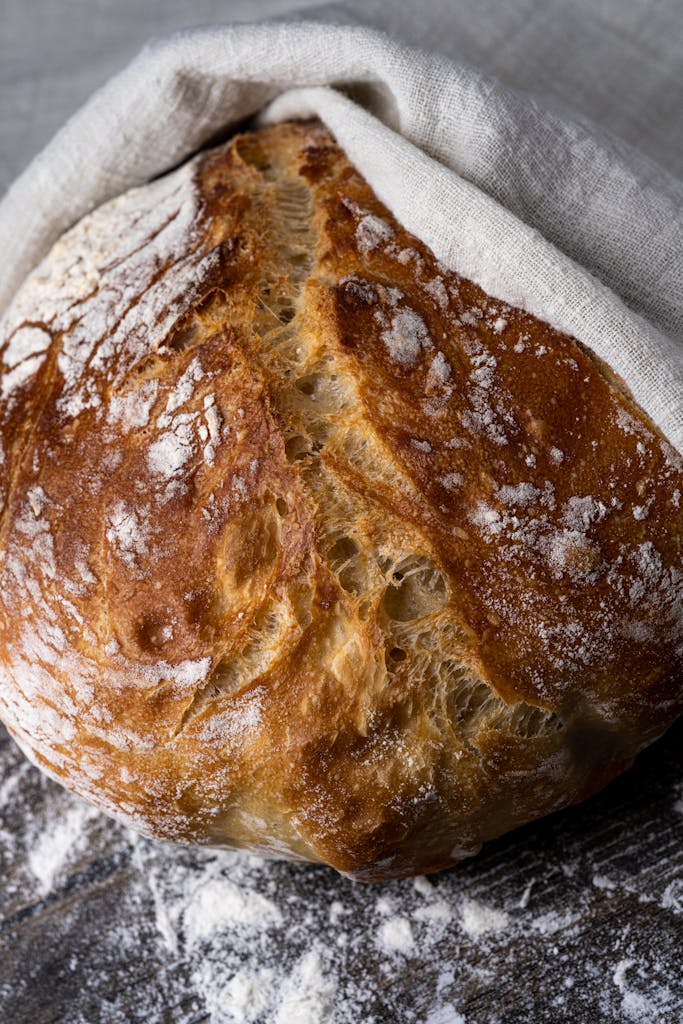
What is Open Baking Sourdough Bread?
Open baking is the technique of baking sourdough bread directly on a baking stone, steel, or oven rack without a Dutch oven. Instead, steam is introduced separately into the oven, allowing the bread to bake in an open environment. This method gives you more control over crust development and batch size.
Why Should You Try Open Baking Sourdough Bread?
There are several reasons to explore open baking homemade sourdough bread:
Larger Batch Capacity: Baking without a Dutch oven allows you to bake multiple loaves at the same time, which is great for larger bakes.
Crust Control: Open baking provides greater control over crust thickness and caramelization. Who doesn’t like a nice crisp crust?!
Enhanced Flavor & Texture: The open environment can create a chewier crust with deep, complex flavors.
Artisan Aesthetic: Get a more rustic, artisan-style look with beautiful scoring patterns and blistered crusts.
Skill Development: Open baking challenges you to master steam management, scoring techniques, and hydration balance, deepening your bread-baking expertise.
Bonus: You get to watch your sourdough bread rise! This, for me, is a good enough reason to try baking sourdough bread without a Dutch oven.
Essential Tools and Equipment for Open Baking
Disclaimer: As an Amazon Associate, I earn from qualifying purchases.
To get started with open baking, you’ll need some tools that you might already have in your kitchen. As you start developing your skills in open baking :
Baking Steel or Stone: Provides heat retention for better oven spring.
Lame (Bread Scoring Tool): For scoring your dough to control expansion.
Pizza Peel or Transfer Board: Helps you safely transfer dough to the oven.
Steam Generation Tools: Options include lava rocks, a steam tray, or a spray bottle. I use a cast iron pan lined with aluminum foil and lava rocks.
Baking Stone vs. Cookie Sheet: Which is Better?
A baking stone is a great tool for baking sourdough bread. It helps distribute heat evenly and creates a crispy crust.
Consider investing in a baking stone or baking steel if you plan on baking sourdough bread often.
A cookie sheet can also be used, but it may not produce the same crispiness as a baking stone.
Dutch Oven vs. Open Baking Sourdough Bread
Both methods have their merits:
Dutch Oven Baking:
Dutch ovens naturally trap steam from the bread dough while it is baking. As the water evaporates, the steam is trapped inside the Dutch oven, creating the ideal environment for baking sourdough bread. You can also introduce more steam by adding a few ice cubes to the Dutch oven before placing the lid back on.
A cast-iron Dutch oven is a standard tool for sourdough bakers. It is simple to use and does not require creating extra steam. It is also ideal for baking smaller batches of bread.
Open Baking:
Open baking requires a manual steam method. One of the most important points to remember when open baking is to create the proper steam environment in your oven. Without it, you could end up with a flat loaf.
Using this method provides better control over the crust texture, thickness, and color. It is also suitable for larger batches of bread.
Preparing for Open Baking
Getting ready for open baking is pretty simple—just think of it as giving your bread a chance to show off without a lid! You’ll need a preheated oven, a baking stone or steel (or a trusty sheet pan if that’s what you’ve got), and a way to create steam, like a hot water tray or spritzing the loaf with water.
You can also invest in culinary-grade lava rocks. Place them in a cast iron skillet or heavy roasting pan at the bottom of your oven. Add about 2 cups of water to it right after placing the dough in the oven. Be careful! It will steam a lot.
Techniques to Perfect Open Baking
Preheat Properly: Heat your oven with the baking stone/steel for at least 30 minutes. I sometimes heat my oven for one hour before I start baking.
Note: If you don’t want a super dark crust on the bottom of your sourdough bread, try putting a baking sheet on the rack underneath the baking stone.
Introduce Steam: Use a preheated tray with boiling water or spritz water onto preheated lava rocks during the first 10-15 minutes of baking.
Proper Scoring: Score the dough well to control expansion and create an attractive ear.
Hydration Management: Higher hydration doughs benefit most from open baking.
Temperature Control: Start baking at a high temperature (475-500°F) for good oven spring, then reduce slightly.
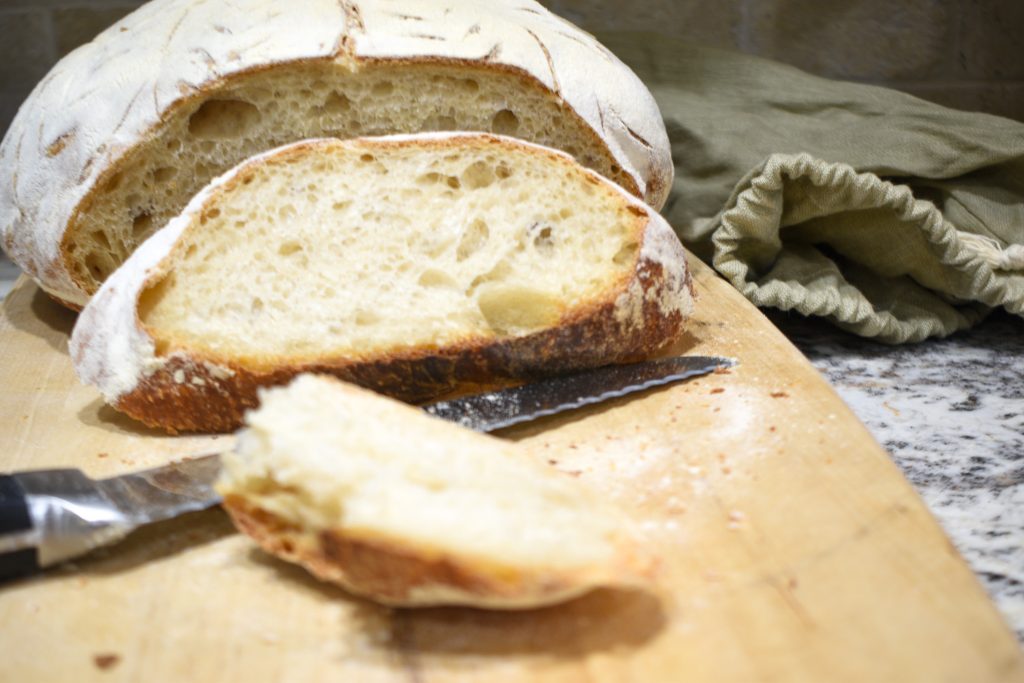
The Role of Steam in Sourdough Baking
Why Does Bread Need Steam?
Bread needs steam during baking to create a crisp, shiny crust and support proper oven spring. Steam keeps the dough’s surface moist during the early stages of baking, delaying crust formation so the bread can fully expand. Moisture also helps gelatinize starches on the surface, giving your sourdough bread a glossy finish.
Without steam, the crust can form too quickly, trapping the dough and leading to a denser loaf. Steam is especially important for lean doughs like sourdough, where crust and crumb structure are critical for quality.
Achieving Oven Spring
Oven spring refers to the rapid rise of dough during the first 10-15 minutes of baking. It is achieved by creating a warm and steamy environment that helps the dough rise and expand.
While a steamy oven is the main contributor to a higher rise, rescoring your bread before the bread dough hardens can also help you achieve oven spring and beautiful loaves.
Creating a Crispy Crust
A crispy crust is a key component of a well-baked sourdough loaf. It is achieved by creating a hot and dry environment, which helps the crust to brown and crisp up.
Depending on how crispy you like your sourdough bread, you can easily control the crust by adding or removing steam. The first 10-15 minutes are crucial for oven spring. You can introduce more steam after this time to keep the crust softer.
How to Manually Add Steam Without a Dutch Oven
Place a metal baking tray on the bottom rack of your oven while it preheats. Once you slide your bread in, pour a cup or two of hot water (carefully!) into the hot tray and shut the door fast. The water will create steam, helping your bread get that crisp, golden crust.
The Importance of Steam in Open Baking Sourdough
Steam plays a crucial role in open baking bread. It:
Prevents the crust from setting too early.
Allows for better oven spring and increased loaf volume.
Gives your sourdough bread to a shiny, blistered crust.
Troubleshooting and FAQs
Troubleshooting Issues with Open Baking
Flat loaves or thick pale crust: This could result from not adding enough steam during the first 10-15 minutes of the bake.
Burnt Bottom: Baking stone is too hot, or the rack with the dough is placed too low. You can control the heat on the baking stone by putting it in the oven when it is done preheating.
Poor Oven Spring: Dough might be under-proofed or insufficient scoring. Try re-scoring your sourdough bread after 5 minutes of the bake before the crust hardens. This will give you a better oven spring. Poor oven spring could also be related to not adding enough steam at the beginning.
Ready to try open baking sourdough bread? Try these simple recipes!
FAQs
Can I Open Bake in a Home Oven?
Yes! Just ensure you create enough steam using a tray with boiling water or preheated lava rocks.
Is Open Baking Harder without a Dutch Oven?
It requires more skill due to steam management but offers more control.
Do I Need a Baking Stone for Open Baking?
Yes, it helps with even heat distribution.
How Can I Create Steam Without Lava Rocks?
A cast iron pan filled with boiling water also works well.
Don’t let the lack of a Dutch oven hold you back from creating amazing sourdough bread! With these techniques and a bit of practice, you’ll be amazed at the professional results you can achieve using simple kitchen equipment. Remember, great bread comes from understanding the process, not from expensive tools. Start experimenting with these methods today, and you’ll soon be creating sourdough masterpieces that rival any Dutch oven-baked bread. Happy baking!


